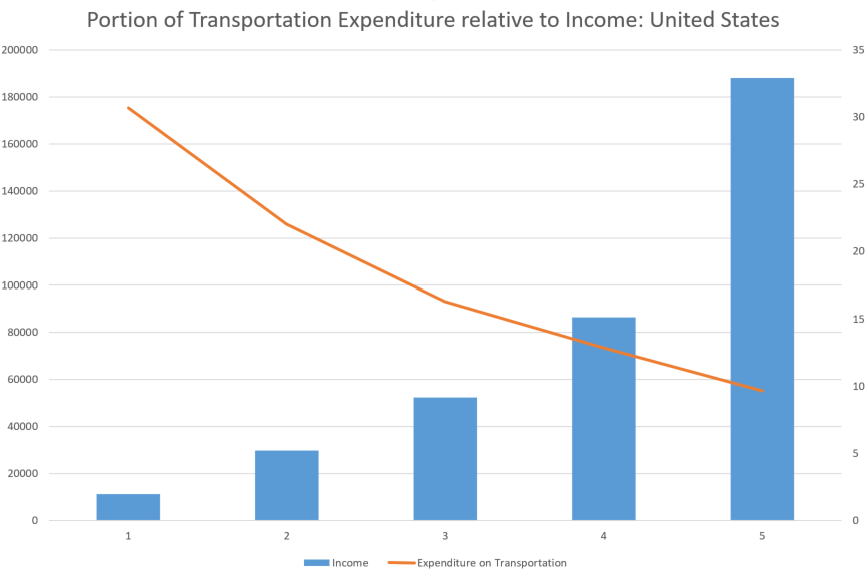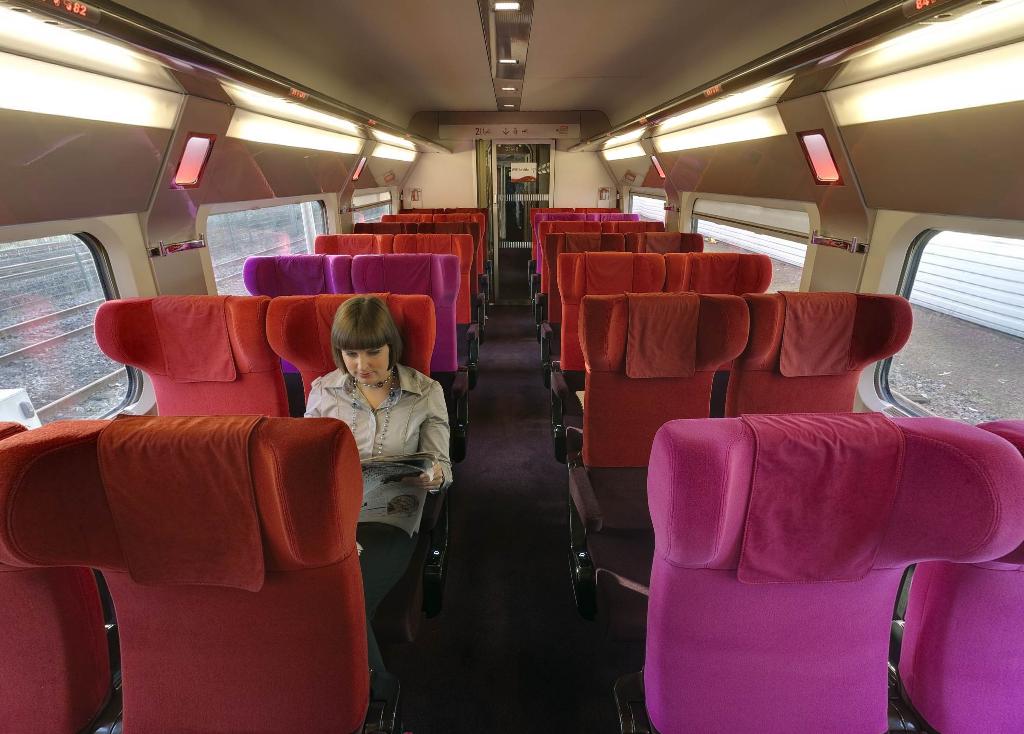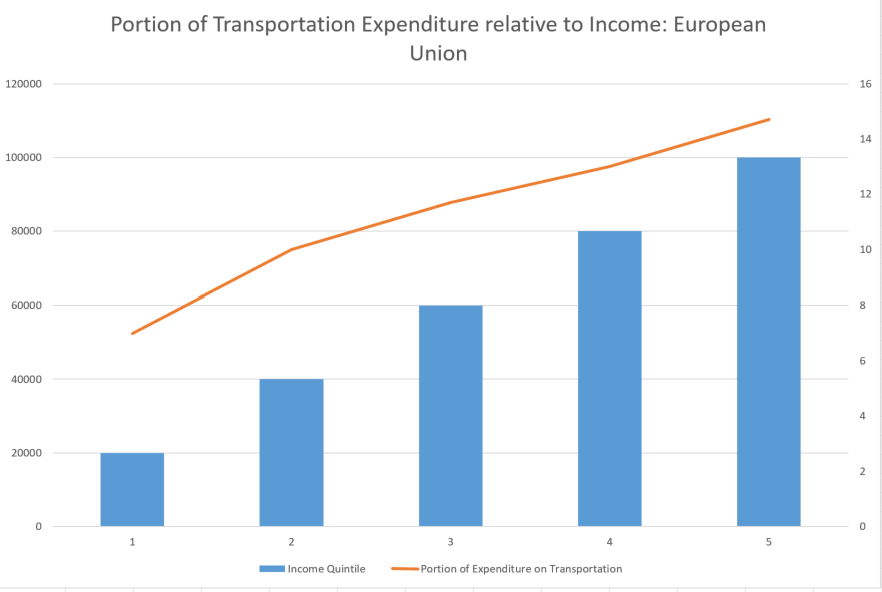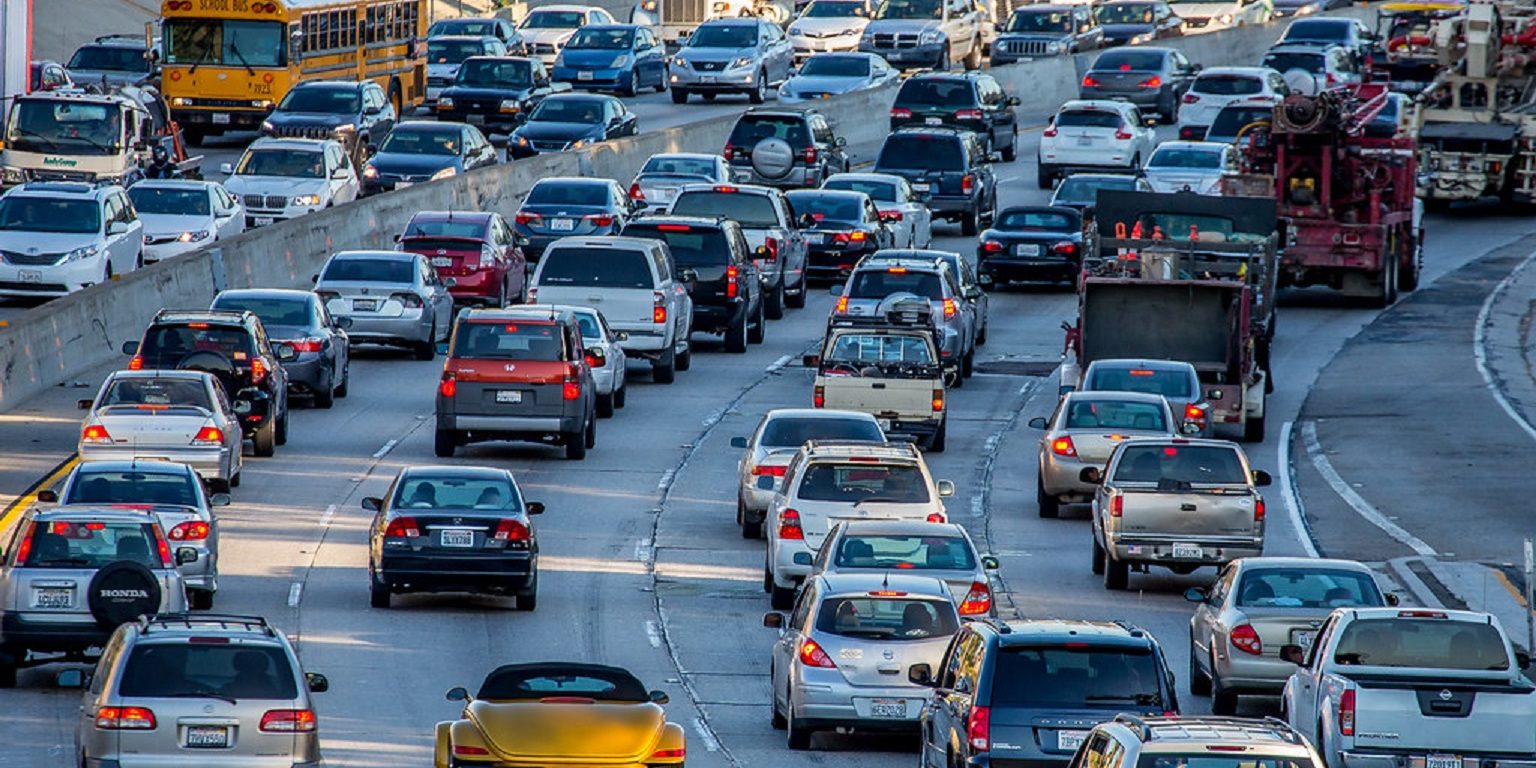Introduction
What does the average American pay to get around every day? What portion of their income is devoted to transportation and is that cost typical across developed countries? The answer is no. The portion of household expenditure spent on transportation in United States is often a larger portion than that spent by many throughout the world. This difference is even more stark among low income earners, despite US government subsidies in transportation.
How much do Americans actually pay for transportation?
Data shows that Americans spend 13% of their household expenditure on transportation, a larger portion than people in Europe.
On average, Americans own 2.28 cars, meaning that many households in the United States have three or more vehicles. In fact, 35% of American households own three or more cars. Personal vehicles accounted for the largest amount of transportation expenditures in 2017 – a total of $1.1 trillion, almost 90% of total transportation expenditures. In 2017, transportation costs made up the fourth largest expenditure among American households which spent an average of $9,737 each on transportation costs. The bulk of this cost is vehicle purchasing ($4,001) followed by other vehicle expenditures ($3,603) which can include insurance and repairs. Perhaps not surprisingly, fuel and motor oil made up the smallest expenditure in the personal vehicle category at $1,968 annually. These numbers indicate that in the United States, vehicle ownership is an expensive endeavor. Americans spent significantly less on any other travel than on vehicle ownership and maintenance. Under 5% of all transportation spending was spent on local, ground, or public transportation. It is worth noting that vehicles are depreciating assets, so their value is almost never regained upon resale.
Who pays what?

While the average American spends roughly 13% of household expenditure on transportation, this cost is not similar across incomes. Lower income households generally pay a larger portion of their expenditure on transportation and as people move up in income brackets, they pay a smaller portion on transportation. The lowest income is burdened with the largest portion of expenditure.
In 2016, in the US, the lowest earning 20% of the population earned an average of $11,933, and spent an average of $3497 (29%) on transportation costs. The poorest get hit the hardest by the (lack of) transport system. For those making roughly $30,000 a year, their transportation expenditure was about 22%, then 17% for the next quintile. As Americans move from lower to higher income, the portion of their expenditure going towards transportation decreases. This makes sense. Personal vehicles are not cheap, and are not subsidized. Because American cities fail to provide people with alternative transportation options, people are forced to travel by personal vehicles. This leaves people with low incomes left with few options. While criticisms of lack of public transportation focus on the toll to the environment, they should also consider the issue of equity. Lack of public transportation is a financial burden – by not having good options, people are forced to make burdensome financial decisions and are left in a cycle of poverty that becomes harder to escape. ITDP’s Joe Chestnut, who wrote the report, Indicators for Sustainable Mobility concluded,
“In the US, there is a narrative that if people work hard, then they can get out of poverty, but we’ve built cities that make this narrative impossible. For households making less than $20,000 per year, reliable cars are a pipe dream: a huge expense that they can’t afford. Without adequate transit, they will remain stuck in place.”
Additionally, due to the lack of density in various metro areas, the distance between affordable housing and jobs has increased, making people more reliant on their personal vehicles to go longer distances. Even if housing in certain areas might be affordable, the cost of transportation may negate the savings made through housing. As places are built without transit-oriented planning and as housing costs rise, traveling long distances and living in car reliant areas becomes more and more common. An unfortunate trend both for Americans, and the environment.

Does it have to be this way?
No. Compared to the United States, people in European countries spend a smaller portion of the income on transportation. This difference is most pronounced at lower income brackets, but remains consistent across incomes. For the lowest quintile in European countries the spending on transportation is less. For example, among the poorest 20% of people in the European Union, they paid roughly 7.5% of their expenditure on transportation.
As incomes increase so too do the portions spent on transportation, as each income bracket people’s expenditure towards transportation increases. On average, Europeans pay about 11% of their household expenditure on transportation.
What is interesting in this comparison is that throughout Europe, policies exist making driving an expensive endeavor. Petrol is taxed, parking is expensive, and toll roads are abundant. However, these costs do not contribute to an overall annual cost of transportation to the individual. In fact, in Europe, people still pay less for transportation than Americans.
When looking at the pricing structure for European transportation, the fees and taxes associated with driving all provide an important source of regular income to the governing bodies. This allows for more money to go towards sustainable transportation. While political will remains a huge reason for the functional public transportation systems, so too does funding. With funding available broadly, not only are people deterred from taking private vehicles – they often can save both time and money by taking public transportation.

Subsidizing a common good on the backs of individuals is antithetical to most Americans, but this argument is framed incorrectly. When many Americans think of public transportation they think of something that they will never use, they see it as a service that they would be paying into without any personal benefit. On the other hand, in Europe the evidence is clear – when costs associated with driving are levied and applied to public transportation infrastructure, it becomes better and more efficient. With common sense pricing policies, the revenue brought in creates necessary funding that can improve, expand, and increase public transportation.
How to fix it?
Should Americans move to live closer to work? In a perfect world, yes but unfortunately, that option is not very easy. How space is designed in the United States is a major contributor to this problem. Single zoning laws force residential neighborhoods to be separated from commercial districts. Roads and suburbs are designed to be car dependent limiting options for public transit. Over 75% of commuting car trips in the United States are made by one person in one vehicle – a reality that is inefficient in both time and space. Additionally, most car trips in the United States are relatively short, between 1 – 8 kilometers, a distance that could arguably be made through other means if the option existed. By focusing on Transit Oriented Development, cities can create spaces that support use of public transportation.
As seen in the Indicators for Sustainable Mobility, very few Americans take public transit, walk, or cycle to work and that’s not for lack of interest – it’s for lack of options. The design of American cities and regions forces millions of Americans to pay for something that perhaps they wouldn’t choose to if they actually had an option. This lack of option is why Americans are shelling out more and more money for a depreciating asset.
Public Transportation is not a lost cause in the United States. Looking towards other countries, Americans can learn how to create and support spaces that are less car reliant. Not only will this create better cities for the environment and the consumer, but this will greatly reduce the financial burden inflicted on America’s poorest. By helping those with the fewest resources, America can create public transit that benefits all.

